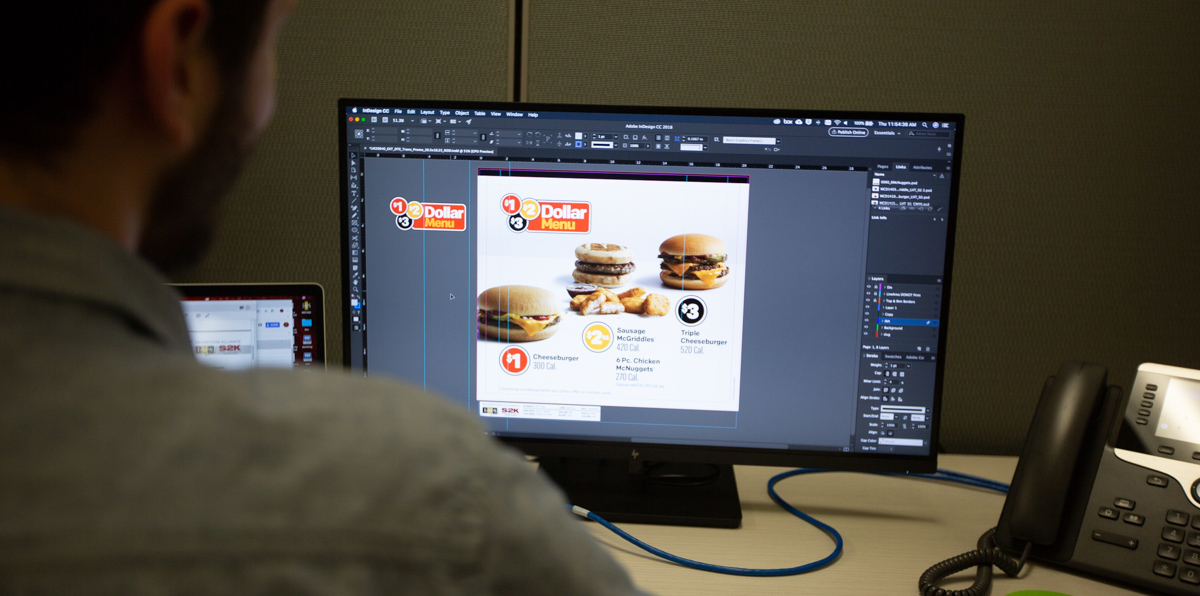Merchandising is all about using physical displays, images, text and other media to attract your target audience to your products — and to get them closer to actually buying them.
Of course, a lot goes into making this happen.
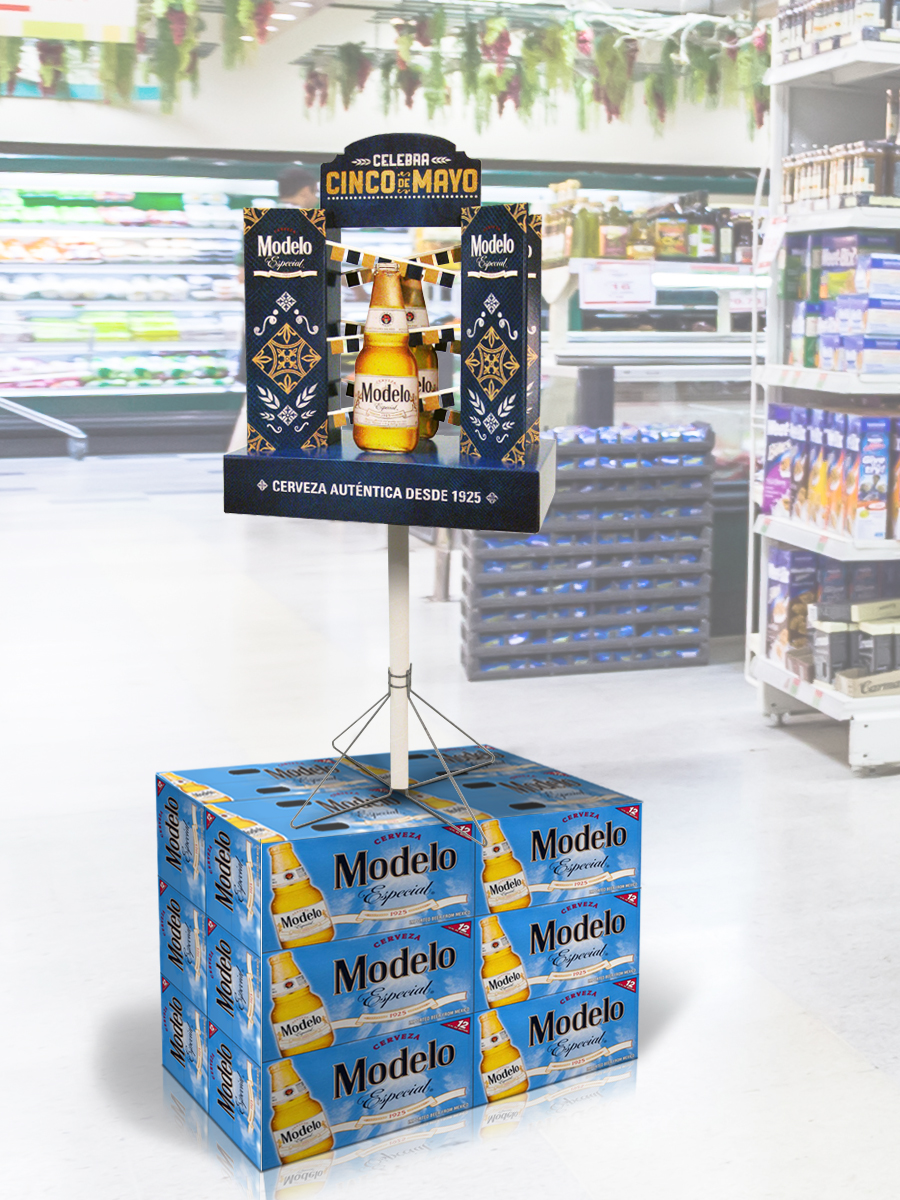 When developing content for merchandising purposes, brands need to ensure the content:
When developing content for merchandising purposes, brands need to ensure the content:
-
- Clearly communicates the value of the product
- Showcases the product “in action” in a way that matters to the customer
- Creates a branded atmosphere and overall experience for their audience members
The most successful merchandising campaigns are those that focus on both creativity and practicality. The goal is to find the “sweet spot” in which a creative idea can be translated into reality in a way that closely matches the team’s original vision. In turn, your merchandising efforts will almost certainly allow you to accomplish the goals mentioned above.
The question is, how do you find this sweet spot when collaborating with your creative team or agency as you seek to bring your vision to life?
Nail Down Your Merchandising Goals and Capacity
Before you move forward with an idea for a merchandising campaign, there are two questions to consider:
-
- What do you hope to accomplish through the initiative?
- What resources can you invest in the initiative?
What You Want to Accomplish
Though we mentioned the overarching goals all merchandising campaigns have in common, you’ll want to dig a bit deeper to answer this first question.
Here, you’ll want to think about:
-
- The specific products or services you intend to promote
- The audience segment(s) you want to attract
- The message you want to communicate via your merchandising content
Having clear definitions in place for each of these from the start of a campaign is vital. For one thing, your team and partner agency will be more focused on creating merchandising content that resonates with a specific target audience — making them much more likely to engage further with your brand. You’ll also be better able to gauge your campaign’s performance and use this information to optimize your future merchandising initiatives.
What Resources You Can Invest
Regarding the second question, you need to nail down the logistics of the initiative.
What can your budget afford? How soon do you want the campaign to go live? How long do you want to run it? What blockers are in place that could cause the campaign to go off the rails?
In answering these questions, your creative team and/or agency will gain a more realistic idea of how your creative vision can come to life in a way that leads to your intended goals.
Start With a Template, Add in Specifics
While your merchandising campaigns will need to be creative and innovative in some way, you don’t necessarily need to reinvent the wheel when getting started. Unless you or your agency’s company is brand new, both parties likely have a number of resources on hand to help get your next campaign off the ground.
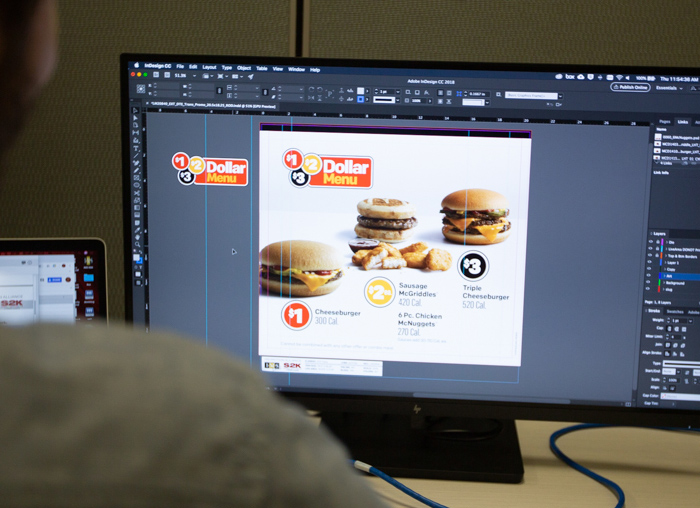 Take IMS’ partnership with McDonald’s, for example. In creating digital menu boards and promotions for regional franchise locations, our team typically goes through the following process:
Take IMS’ partnership with McDonald’s, for example. In creating digital menu boards and promotions for regional franchise locations, our team typically goes through the following process:
First, we consult McDonald’s’ existing national digital merchandising assets — specifically those featuring the products at the center of the promotional campaign we’ll be creating. We’ll then begin the project using McDonald’s’ provided content template to ensure our local market promotions adhere to McDonald’s brand standards and signage parameters.
Our job is then to take the creative elements and content provided by McDonald’s national agency partners, or any of our other clients and their collaborators, and quickly turn those ideas into realities that fit various local markets. Working within the constraints of the displays can be challenging, and it requires extensive knowledge of client brand requirements and merchandising execution.
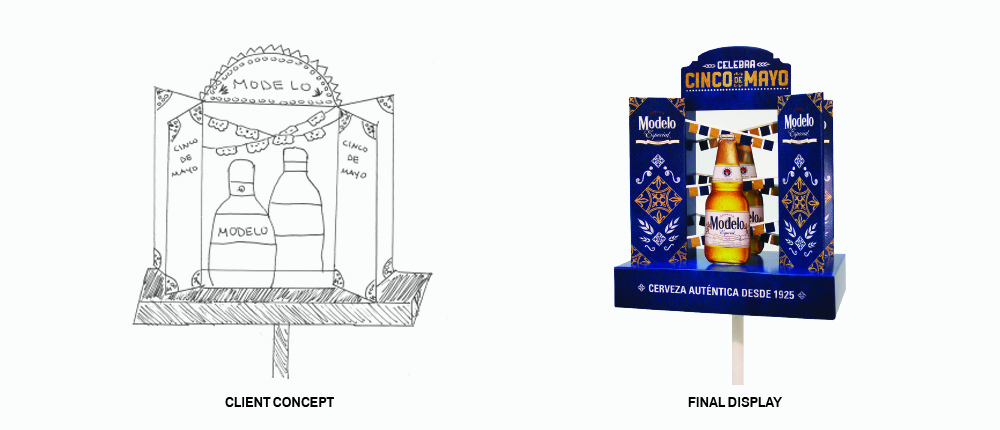
Bringing Concepts to Life
When creating in-store merchandising — whether digital or physical — it’s crucial to understand where and how the content will be displayed. You need to ensure your creative vision can be presented in a way that delivers the intended value and experience to your target audience.
There are a number of factors to consider, here. With digital signage, for example:
-
- Display resolution: Can your digital content be displayed clearly and smoothly on the intended platform?
- Font and image size: Can the content be presented in full on the platform without cutting anything out?
- Color: Does the color theme of your digital signage align with the color theme of its surrounding environment?
- Placement: Will your audience be able to digest the sign’s entire message within a single glance?
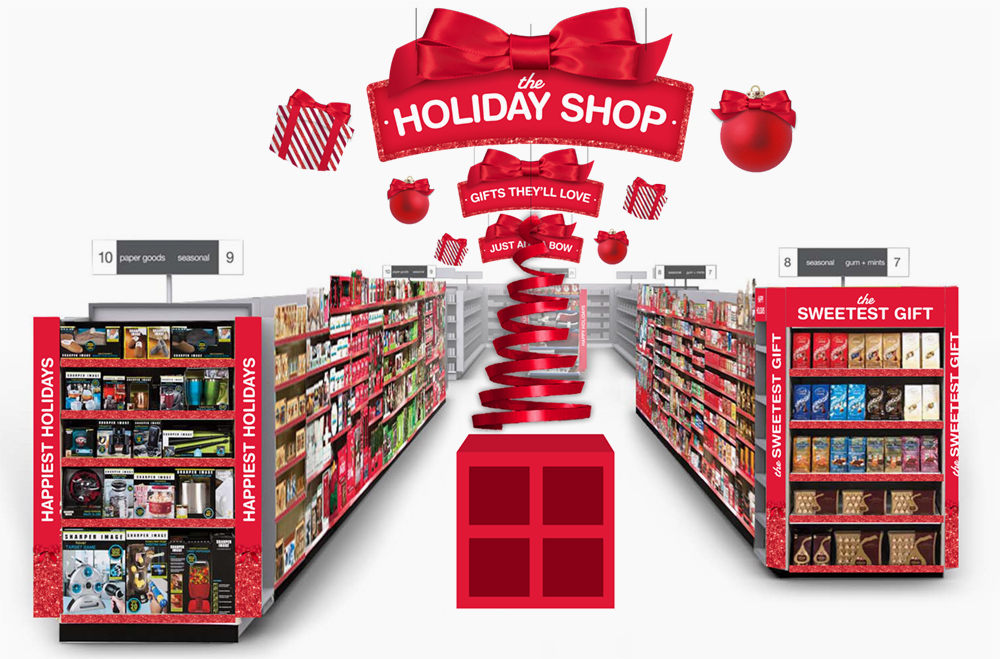 Outside of digital displays, there can be any number of possible hurdles to deal with. One IMS client had a holiday display concept with floating ornaments — something that obviously denies the laws of physics. Our job was to find a creative way to make it look like those ornaments were floating, which meant working with vendors and the creative agency to bring the client’s vision to life.
Outside of digital displays, there can be any number of possible hurdles to deal with. One IMS client had a holiday display concept with floating ornaments — something that obviously denies the laws of physics. Our job was to find a creative way to make it look like those ornaments were floating, which meant working with vendors and the creative agency to bring the client’s vision to life.
It’s a balancing act of sorts. On the one hand, you want to create a piece of signage or a merchandising display that stands out to your audience and gets people to engage further with the offer you’re presenting. On the other, it needs to fit into the branded environment in which you’ll be placing it.
That said, the goal is for your display to stand out for the right reasons—not to stick out like a sore thumb.
Doing this well often means bringing together disparate ideas and requirements from a variety of sources — clients, vendors, agencies and more. To learn how IMS can help facilitate communication and collaboration between your creative teams and your clients, contact us today.

Article Author: Kristy Revoldt
Kristy Revoldt is the Senior Production Director at IMS and has worked in the print and procurement industry for over 25 years. Since joining IMS over 16 years ago, Kristy now manages our production operations division, focusing on strategic sourcing and process management.

Article Author: Larry Radice
Larry Radice is a Digital Architect at IMS. Larry has over 25 years pre-media experience, spanning all things digital including motion graphics, pre-press, web development, graphic design, project management, and asset management.

